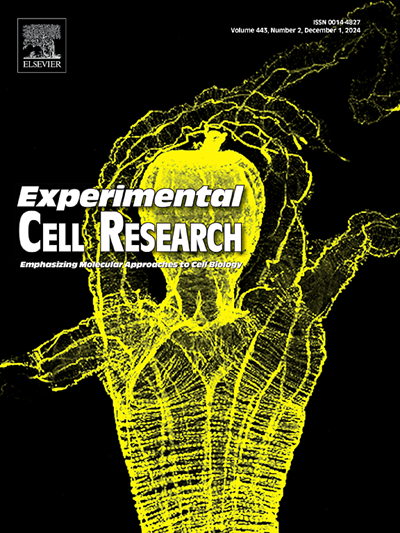Nuciferine alleviates non-alcoholic steatohepatitis by restoring endoplasmic reticulum stress
IF 3.3
3区 生物学
Q3 CELL BIOLOGY
引用次数: 0
Abstract
Background
Nuciferine(NF) has been shown to alleviate Non-alcoholic steatohepatitis (NASH), however, the exact mechanism of action remains to be explored. In this study we evaluated the pharmacological impact of NF on NASH models in vitro and in vivo, with a particular focus on its roles in regulating lipid metabolism, mitigating endoplasmic reticulum stress(ERS), and safeguarding mitochondrial function.
Methods
In vivo, Male C57BL/6J mice were fed a methionine and choline-deficient(MCD) diet to induce NASH, and then given NF orally for four weeks. NASH indexes were evaluated by histopathological analysis and biochemical parameters. In vitro, we established a free fatty acid (FFA)-induced NASH model in HepG2 cells and evaluated NASH by detecting cellular lipids and inflammatory factors.
Results
We found that NF had the potential ability to counteract the weight loss triggered by the MCD diet and to dose-dependently ameliorate liver steatosis and inflammatory responses as observed histopathologically. It was further found that NF was able to reduce hepatic malondialdehyde (MDA) levels, and elevate superoxide dismutase (SOD) and glutathione peroxidase (GSH-PX) activities. An in vitro model of FFA-induced steatotic HepG2 cells was established, and it was found that NF was able to reduce cellular lipid accumulation, lower triglyceride (TG) levels, and reduce MDA levels and restore mitochondrial respiratory function. In vitro and in vivo studies showed that NF was able to downregulate ERS-related protein expression.
Conclusion
In conclusion, NF played a multifaceted role by reducing oxidative stress, decreasing the levels of inflammatory cytokines, and mitigating ERS, which are pivotal in the pathogenesis of NASH.
荷叶碱通过恢复内质网应激减轻非酒精性脂肪性肝炎
背景:荷叶碱(NF)已被证明可缓解非酒精性脂肪性肝炎(NASH),但其确切的作用机制仍有待探索。在这项研究中,我们评估了NF在体外和体内对NASH模型的药理学影响,特别关注其在调节脂质代谢、减轻内质网应激(ERS)和保护线粒体功能方面的作用。方法在体内,雄性C57BL/6J小鼠以蛋氨酸和胆碱缺乏(MCD)诱导NASH,然后口服NF,持续4周。通过组织病理学分析和生化指标评估NASH指标。在体外,我们在HepG2细胞中建立了游离脂肪酸(FFA)诱导的NASH模型,并通过检测细胞脂质和炎症因子来评估NASH。结果通过组织病理学观察,我们发现NF具有抵消MCD饮食引起的体重减轻的潜在能力,并具有剂量依赖性地改善肝脏脂肪变性和炎症反应。进一步研究发现,纳皮能降低肝脏丙二醛(MDA)水平,提高超氧化物歧化酶(SOD)和谷胱甘肽过氧化物酶(GSH-PX)活性。建立游离脂肪酸诱导的HepG2细胞脂肪变性体外模型,发现NF能够减少细胞脂质积累,降低甘油三酯(TG)水平,降低MDA水平,恢复线粒体呼吸功能。体外和体内研究表明,NF能够下调ers相关蛋白的表达。结论NF具有降低氧化应激、降低炎性细胞因子水平、减轻ERS等多重作用,在NASH发病机制中起关键作用。
本文章由计算机程序翻译,如有差异,请以英文原文为准。
求助全文
约1分钟内获得全文
求助全文
来源期刊

Experimental cell research
医学-细胞生物学
CiteScore
7.20
自引率
0.00%
发文量
295
审稿时长
30 days
期刊介绍:
Our scope includes but is not limited to areas such as: Chromosome biology; Chromatin and epigenetics; DNA repair; Gene regulation; Nuclear import-export; RNA processing; Non-coding RNAs; Organelle biology; The cytoskeleton; Intracellular trafficking; Cell-cell and cell-matrix interactions; Cell motility and migration; Cell proliferation; Cellular differentiation; Signal transduction; Programmed cell death.
 求助内容:
求助内容: 应助结果提醒方式:
应助结果提醒方式:


